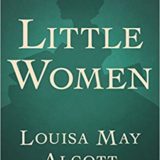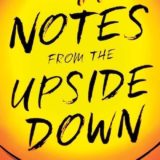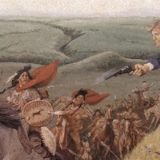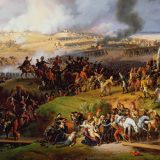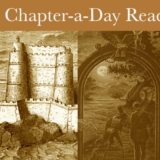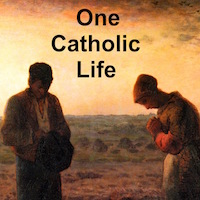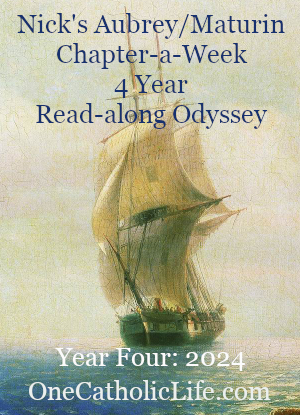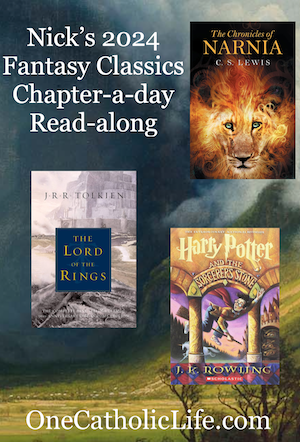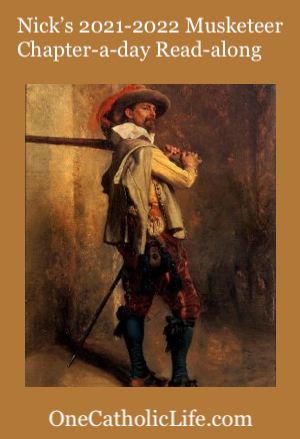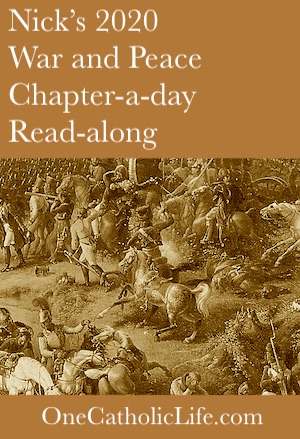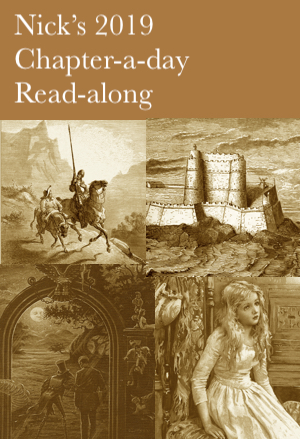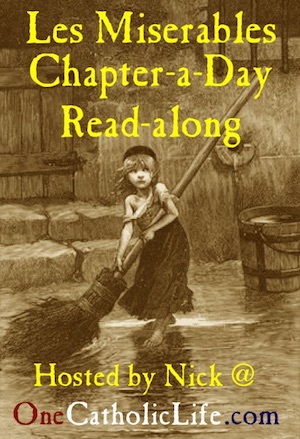On Lent and Avoiding the Star Wars Effect – Homily for the First Sunday of Lent 2015
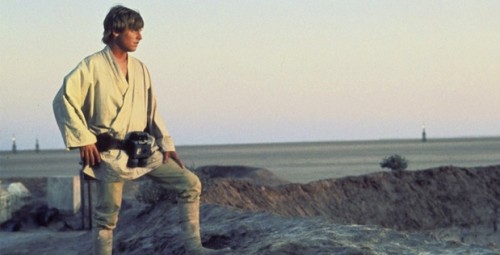 Every year on the First Sunday of Lent,
Every year on the First Sunday of Lent,
the gospel takes us into the desert
where Jesus was tested for forty days.
And we follow Jesus into the desert for these forty days of Lent
so that our hearts can be transformed, so that we can be ready
to enter fully into the Mystery of Easter.
This means being careful of the Star Wars Effect.
When the original Star Wars movie came out in 1977,
every kid my age wanted to see it.
It was the first movie my dad took me and my two brothers to see.
It was a groundbreaking film in many ways.
The film makers made spaceships fly,
brought alien creatures to life, and built alien worlds.
There was one setting in particular
that was extremely difficult to create:
the desert planet Tatooine
where the hero Luke Skywalker lived.
To bring this desert planet to life,
the film makers went to Tunisia, in North Africa.
It took eight weeks for bulldozers and tractors
to reshape the land,
to transform the desert of Tunisia into the iconic sets
where Luke and Obi-Wan would meet for the first time,
where Jawas and the Sand People lived.
The actors and crew spent two and half weeks
in the heat, wind, and sand of the Tunisian desert.
But the harsh conditions paid off,
as Star Wars became one of the most successful films of all time.
During Lent we are driven into the desert.
Not to make a movie, but to make a change in our lives.
Just as Jesus spent forty days in the desert among wild beasts,
tested by Satan,
the forty days of Lent are to be our time in the desert.
We come to the place of heat, wind, and sand.
We have been driven here by the Spirit, marked with ashes.
This is our time of testing, of facing our demons.
The desert experience
has been a part of salvation history
from the very beginning.
Moses fasted for forty days on Mt. Sinai
and he received the tablets of the covenant.
And when the Israelites were unfaithful to the covenant,
Moses broke the tablets,
but then fasted for another forty days in penance,
until God wrote the tablets again.
The prophet Elijah walked through the desert
forty days and nights to find God on Mt. Horeb.
The Israelites wandered forty years in the desert
before reaching the promised land.
And today we see Jesus as the perfection
of the desert experience.
Immediately after his baptism he is driven into the desert
where the wild beasts are, where Satan tests him.
Through our baptism,
we join with Jesus in the desert and confront our demons.
The desert is a necessary part of an authentic spiritual life.
The solitude of the desert of Lent
gives us time to spend with God in prayer.
Our fasting helps us recognize what habits and attitudes
have been holding us prisoner.
In the desert we can draw on the strength of God
to be angels who minister to the poor and needy among us.
Jesus returned victorious from his time in the desert
to announce, “Repent, and believe in the gospel.”
The word “repent” is a translation of the Greek word metanoia,
“a change of heart.”
Jesus says,“Change your heart and believe in the gospel.”
We go to the desert of Lent so our hearts can be changed.
But they cannot change if we give in to the Star Wars Effect.
Star Wars was so successful that it led two sequels.
And each of those movies required exotic, alien locations.
In The Empire Strikes Back, film makers created the ice planet Hoth
by filming on an actual glacier in Norway.
In Return of the Jedi a thrilling speeder chase took place
on the forest moon of Endor
by using footage from the Redwood forests of California.
But with each movie,
the films relied less and less on real locations,
and more and more on sound studios and special effects.
In fact, when a new series of Star Wars movies was made,
twenty years after the original movie,
almost all of the sets and backgrounds were created digitally.
The actors stood in front of a green screen waving light sabers
pretending they were on location
while a computer added the backgrounds later.
They appeared to be in the desert,
but they were in the safety of the sound studio.
Now that might make good sense if you’re filming a movie.
It’s easier on the actors, it’s less expensive,
and it gives the film makers more freedom
to create the worlds they want.
But even in a movie with the best digital effects
you lose something of the grittiness or the texture
of a real location.
The second Star Wars series looks more sterile,
more artificial than the first series.
And as we come to Lent year after year,
it’s tempting to stand in front of a green screen,
having the appearance of entering the desert of Lent,
but not really entering it;
having the look of participating in Lent,
but not really going through the difficulty of being in the desert,
of facing our personal demons,
of having to tolerate the heat and sand.
It’s easier, it’s less costly to our comfort, it give us more freedom,
but it’s less authentic, too.
It’s less real.
And most importantly, there’s no room for a change of heart.
And so as we enter our first full week of Lent,
it would be good for us to consider
whether or not the desert we have entered into
is the real desert that Christ experienced,
or whether it’s a superficial green screen desert experience.
The challenge before us this Lent
is to avoid the Star Wars Effect,
the temptation to a superficial experience of the desert.
When we look at what we have decided to do for Lent,
are we simply standing in front of a green screen,
having the appearance of being among the wild beasts
and demons,
having the appearance of fasting,
or have we truly committed to going into the desert?
“This is the time of fulfillment,” Jesus says.
That doesn’t simply mean,
“Lent has rolled around on the calendar again.”
The word for time in this passage is the Greek work kairos.
Kairos is different from chronological time,
calendar time, day-after-day time.
Kairos is the opportune time, the moment when God acts.
God is acting right now, driving us into the desert.
This time of fulfillment is the opportune time
for us to overcome the temptation to a superficial green screen Lent,
and really enter the desert this year
so our hearts can be changed.
And if we truly enter the desert,
we follow in the footsteps of Moses, Elijah, and the Israelites;
but more importantly we walk in communion with Jesus.
And just as Jesus survived the testing in the desert,
he will survive death.
His early victory over Satan in the desert
foreshadows his great victory over death on the cross.
We are tested in the desert of this life,
but our communion with Christ assures us of victory.
The more we walk with Christ,
the safer we are, the more we share in his victory.
This is the time of fulfillment,
the time to enter the desert of Lent,
to change our hearts,
and believe in the gospel.
Podcast: Play in new window | Download
Subscribe: RSS




